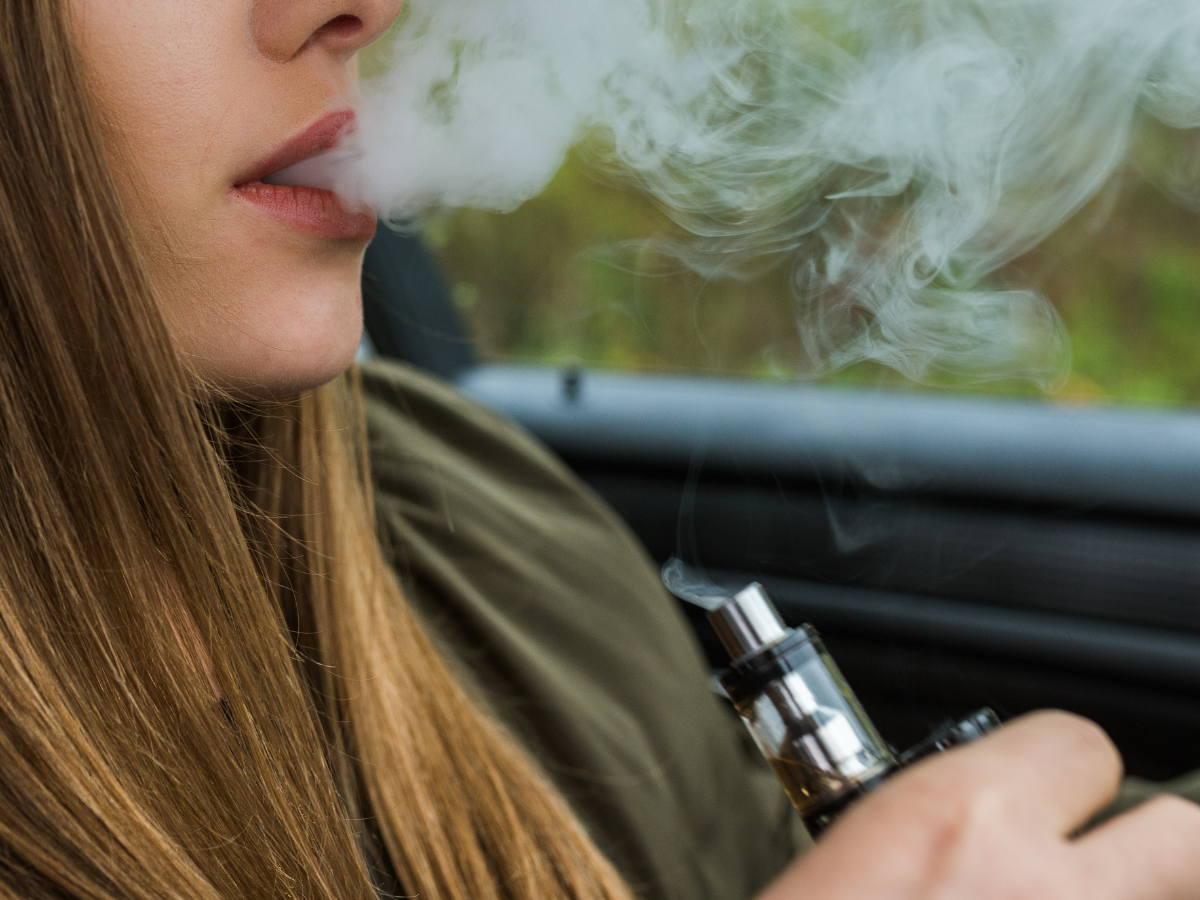E-cigarette use, or vaping, among adolescents has skyrocketed in the last decade, prompting calls to action from the nation’s top health leaders. However, the harms of vaping don’t seem to be sinking in with Georgia youth. A 2019 survey of Georgia teens revealed that nearly 1 in 5 high school students have vaped and 11% of students reported vaping in the past 30 days.
Christina Proctor is a clinical assistant professor in the department of health promotion and behavior at UGA’s College of Public Health. She studies teen substance use, and below, Dr. Proctor provides more details on the harms of vaping and the strategies we can use to reduce teen vaping.
What is vaping, and how does it differ from using cigarettes?
Smoking delivers nicotine by burning tobacco, which we know is associated with many chronic conditions and diseases. Vaping delivers nicotine by heating a liquid that contains nicotine extracted from tobacco, flavors, and other chemicals. Research shows that vaping exposes you to less toxins than smoking cigarettes, but there’s still risk. There’s a lot we don’t know about the chemicals that are contained in vaping products, and we still don’t have enough research about product safety.
Why is there a lot of concern around teens and vaping right now?
E-cigarettes were initially developed to help people quit smoking and were used as a harm reduction strategy for individuals who had a hard time quitting tobacco use. Since then, there have been many different types of electronic cigarettes and vaping devices created to deliver nicotine. Many of these products are developed by the tobacco industry, and the same marketing strategies used to push tobacco on to people have been used to try to get individuals to start using vaping products. More than 2 million U.S. middle and high school students reported using e-cigarettes in 2021, with more than 80% of those youth using flavored e-cigarettes. There are a lot of teens who vape that never had any intention of using tobacco products. Essentially the tobacco companies have found a way to get a new group of people addicted to nicotine just as we were closing in on goals to decrease tobacco product use in this country.
What are some misconceptions about vaping that people need to be aware of?
I think the biggest misconception is that vaping isn’t as harmful as tobacco use. There’s harm in vaping, too. Nicotine is a powerful psychoactive substance, toxic, and is highly addictive. It raises your blood pressure and spikes your adrenaline, which increases your heart rate and the likelihood of having heart issues and heart attacks. A lot of the new vaping devices allow modification of nicotine delivery and often are delivering way more nicotine to the body than a normal cigarette would. You can buy extra strength cartridges or increase the voltage on the devices to get a higher hit of the substance. The high intake of nicotine is concerning, and many people will have a hard time quitting vaping once they start.
What are some of the current public health interventions for vaping?
They are very similar to our public health interventions to decrease tobacco use. Policies restricting access are key to decreasing e-cigarette use in young populations. The federal minimum age to buy e-cigarettes and electronic nicotine delivery systems was raised from 18 to 21 years of age. Advertisements must include a warning about the dangers of nicotine. Increasing prices by adding taxes and restricting e-cigarette or electronic nicotine delivery systems in public spaces or at workplaces are good strategies to decrease use. In addition, there are now mass media campaigns that discourage use. Current use of vaping products has decreased in the past two years, so public health efforts and policies could be contributing to those declines.
– Chancey Phillips
Posted April 12, 2023.







